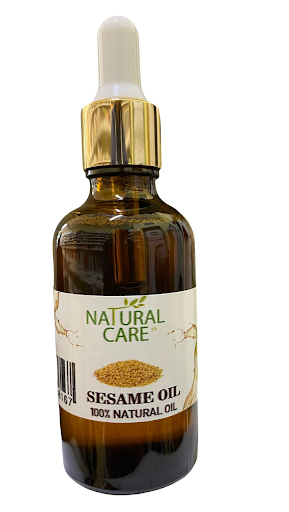Greetings, everyone. Today, our focus is on exploring various oils with medicinal properties. This article delves into the pharmacognostic features that include the scientific, family, local, and English names of these oils, along with the parts used for medicinal purposes, their constituents, and the pharmacological effects of their flowers. Despite their herbal origins, these oils are utilized in medicine based on their pharmacological actions. Additionally, we'll discuss their uses, recommended doses, and potential side effects, as exceeding recommended dosages can lead to toxicity. The availability of these herbal products in the market is also outlined for each oil discussed.
First, let's understand what oils are and the key differences between the two main types of oils (Fixed oils and essential oils)
WHAT ARE OILS?
Oils are a subcategory of lipids. They are long chains of fatty acids and alcohols (glycerol).
KEY FEATURES OF FIXED OILS:
- Natural, non-volatile oils.
- They don't evaporate when placed under room temperature.
- They are extracted via specific techniques.
- They undergo saponification.
- They form permanent stains on clothes.
- They're esters of fatty acids and glycerol.
- They possess a low refractive index.
- These are optically inactive.
- Some examples of fixed oil are peanut oil and almond oil.
- These are essential oils which means they have the essence of the plant.
- They can evaporate if placed open under room temperature.
- They are extracted via distillation.
- They don't undergo saponification.
- They don't leave any permanent stain on clothes.
- They are mixtures of eleoptens (liquid) and stearoptens (solid)
- They possess a high refractive index.
- They are optical reactive.
- Some examples of volatile oils or essential oils are rosemary oil and lavender oil.
OIL DRUG NO. 1
Scientific name: Sesamum indicium Linn.
Family name: Pediaceae
Local name: Til ka teil, Roghan-e-til
English name: Sesame oil
Parts used: Seeds and leaves
Constituents: Oleic acid, linoleic acid, palmitic acid, stearic acid, and glycoside (sesamin and sesamolin)
Pharmacological actions: Antioxidant, anti-inflammatory, analgesic, anti-bacterial, anti-cancer, immunity enhancer, laxative, emollient, demulcent, styptic, anti-hemorrhagic for piles, diuretic, galactagogue, and emmenagogue
Uses and indications: Due to its lignan content, it reduces bad (LDL) cholesterol and triglycerides. It may reduce fasting blood sugar and HbA1c thus aiding in long-term blood sugar regulation. It may prevent certain types of cancers. It is used to cure joint pain, toothache, and scrapes because of its anti-inflammatory properties.
It gives antibacterial activity against Staphylococcus and Streptococcus and antifungal activity against most common skin fungus such as athlete's foot fungus. It may reduce wound healing time when used topically.
Dosage: 7-12g
Side effects: Because of its laxative effects, sesame oil should not be used by people who have diarrhea. Sesame seeds could produce an allergic reaction. Sesame seeds may interact with hyperlipidemic, anti-diabetic, and anti-cancer drugs so it must be taken cautiously while using those drugs.
Product available in the market: Sesame oil
Uses of the product:
- It is used due to its anti-inflammatory properties.
- Good for the heart.
- Controls blood sugar.
OIL DRUG NO. 2
Scientific name: Arachis hypogea Linn.
Family name: Leguminoseae
Local name: Mong Phali ka teil
English name: Peanut oil, arachis oil
Parts used: Seeds
Constituents: Oleic acid (50-65%), linoleic acid (18-30%), palmitic acid (8-10%), stearic acid, arachidic acid, behenic, lignoceric acid and alkaloids (betaine, choline, and arachine)
Pharmacological action: Demulcent, emollient, lubricant, nutritious
Uses and indications: It closely resembles olive oil. It is used as a substitute for olive oil in making ointments, liniments, and plasters and it is also used as a pharmaceutical aid. Its principal use is as food oil. It is non-drying and therefore has no value in paints but it does have value as a lubricant. The oil saponifies slowly but yield An excellent firm, white soap. It is a solvent for intramuscular injections.
Side effects: Peanut allergy is common and can be severe, occurring with a prevalence rate of 0.5% in the general population, accounting for 10 to 47% of food-induced anaphylactic reactions. Symptoms vary from mild urticaria to severe systemic reactions that can be fatal Hypersensitivity starts in childhood and usually lasts a lifetime.
Product available in the market: Peanut oil
Uses of the product:
- It is applied to the skin for joint pain and arthritis.
- It is also used for treating constipation.
OIL DRUG NO. 3
Scientific name: Cocos nucifera Linn.
Family name: Arecaceae
Local name: Narial ka teil, Khopra ka teil
English name: Coconut oil
Parts used: Oil, fruit (husk, shell, water, endosperm, oil), roots, bark, "bloom" of the leaf, cabbage and flowers
Constituents: Saturated fats, monounsaturated fatty acids and polyunsaturated fatty acids, medium chain triglycerides like lauric acid, myristic acid
Pharmacological action: Anti-tumour, antiseptic, moisturizer, anti-inflammatory, bactericidal, diuretic, laxative, anti-lice, demulcent, vermifuge, styptic, depurative, suppurative
Dosage: 3 1/2 teaspoons of pure coconut oil
Side effects: As in any other cooking oil, avoid overheating because of toxic by-products.
Product available in the market: Coconut oil
Uses of the product:
- Moisturizing effect on skin.
- It is also used for eczema.
- It is used for psoriasis.







.jpeg)
.jpeg)



0 Comments